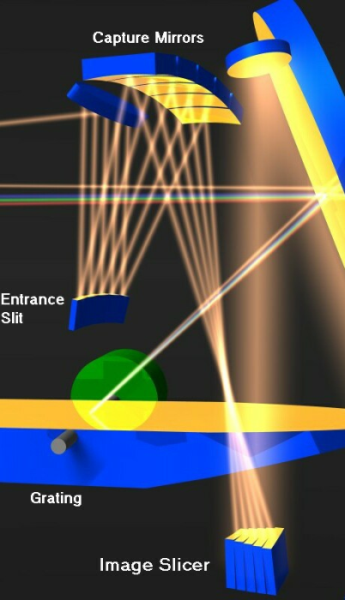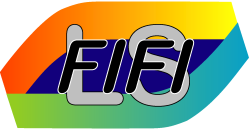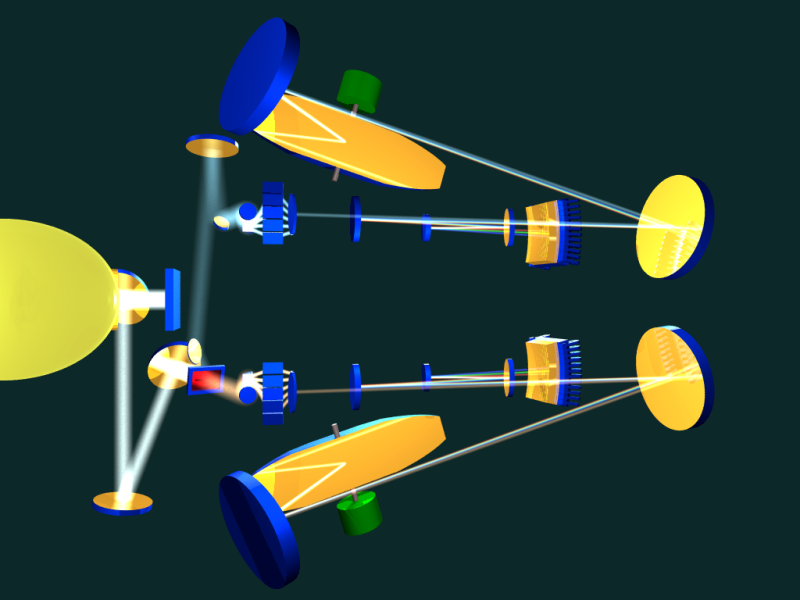| |
Then the Slicer system is the left ventricle
In order to achieve the
integral field concept,
we use a total of 15 mirrors, which slice the 2-D field of
view into a single long slit, suitable for dispersing the light via
a traditional long slit spectrometer.
The incoming light is focused onto the slicer stack mirrors, bottom
right of the figure, which resembles a tilted stack of books.
Each of these 5 mirrors, redirects the light to 5 separate Capture Mirrors,
forming 5 pupils.
The Capture Mirrors then re-focus the field onto the slit mirrors, which are
effectively a pseudo-slit, having the same re-combined pupil.
The slit mirrors focus the input light for the
spectrometer.

The rest of the Optics
Although, the slicer system performs the critical image slicing of FIFI-LS,
the rest of the optics is also essential.
The bottom image shows the entire optical system of FIFI-LS.
On the right is the entrance optics, which includes a K-Mirror for
sky rotation and calibration optics.
Then, the incoming light is split into the short wavelength (upper)
and long wavelength (lower) systems.
The next component is the image slicer (the 5 mirrors lined up
in a vertical line are the Capture Mirrors).
The single slit is then directed into a slightly off-axis
Littrow mounted grating.
The light is first anamorphically collimated using the two
large collimator mirrors, forming an elongated pupil on
the grating. The dispersed
light is reflected back along almost the exact same path as
it entered.
The final 3 mirrors reimage the dispersed image onto
the detectors (the 2nd optical component from
the far-right).
|





